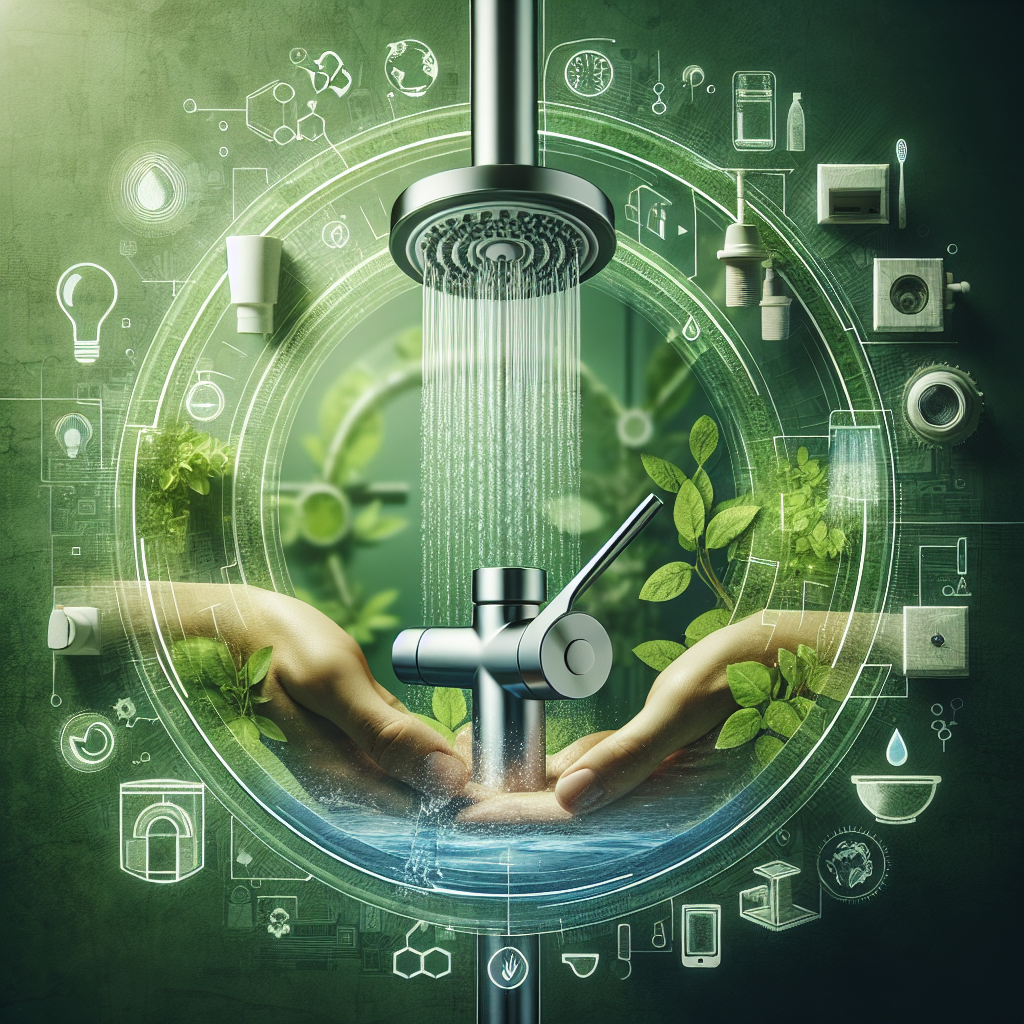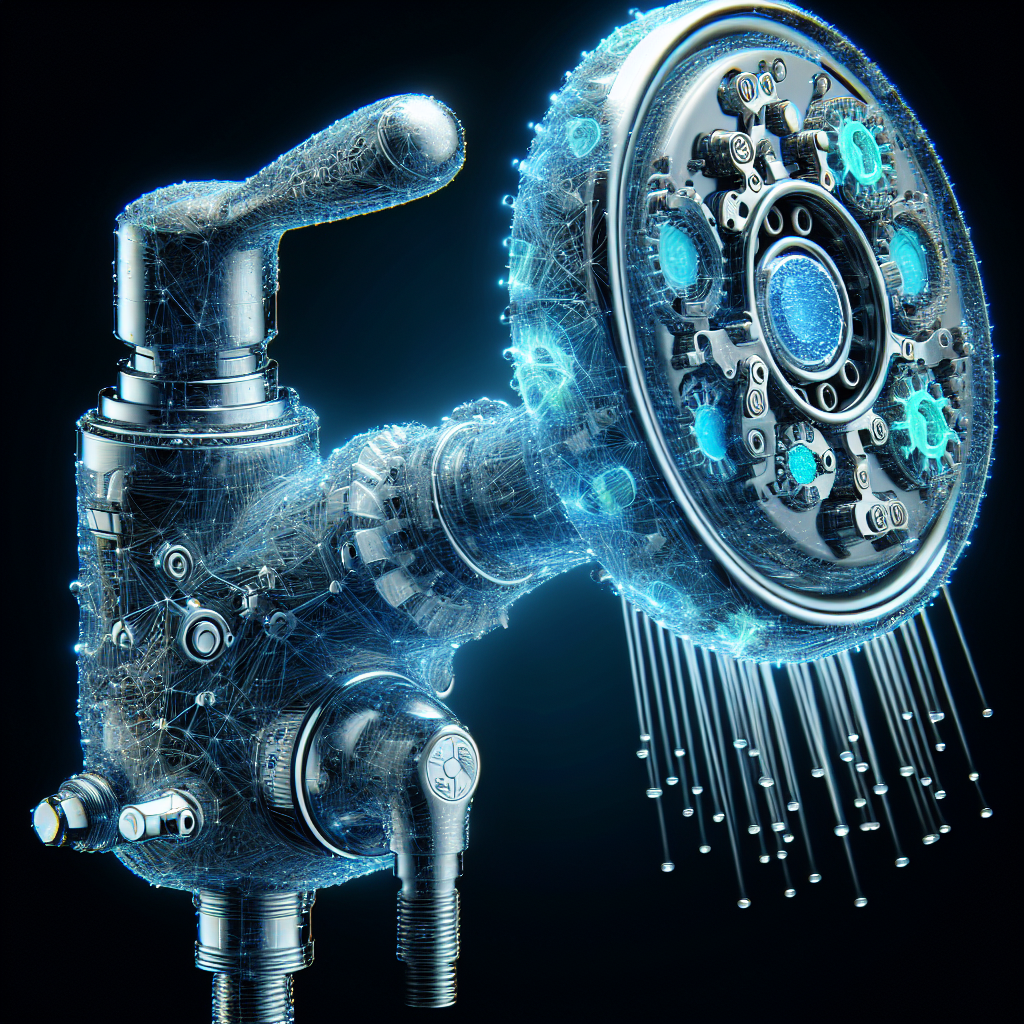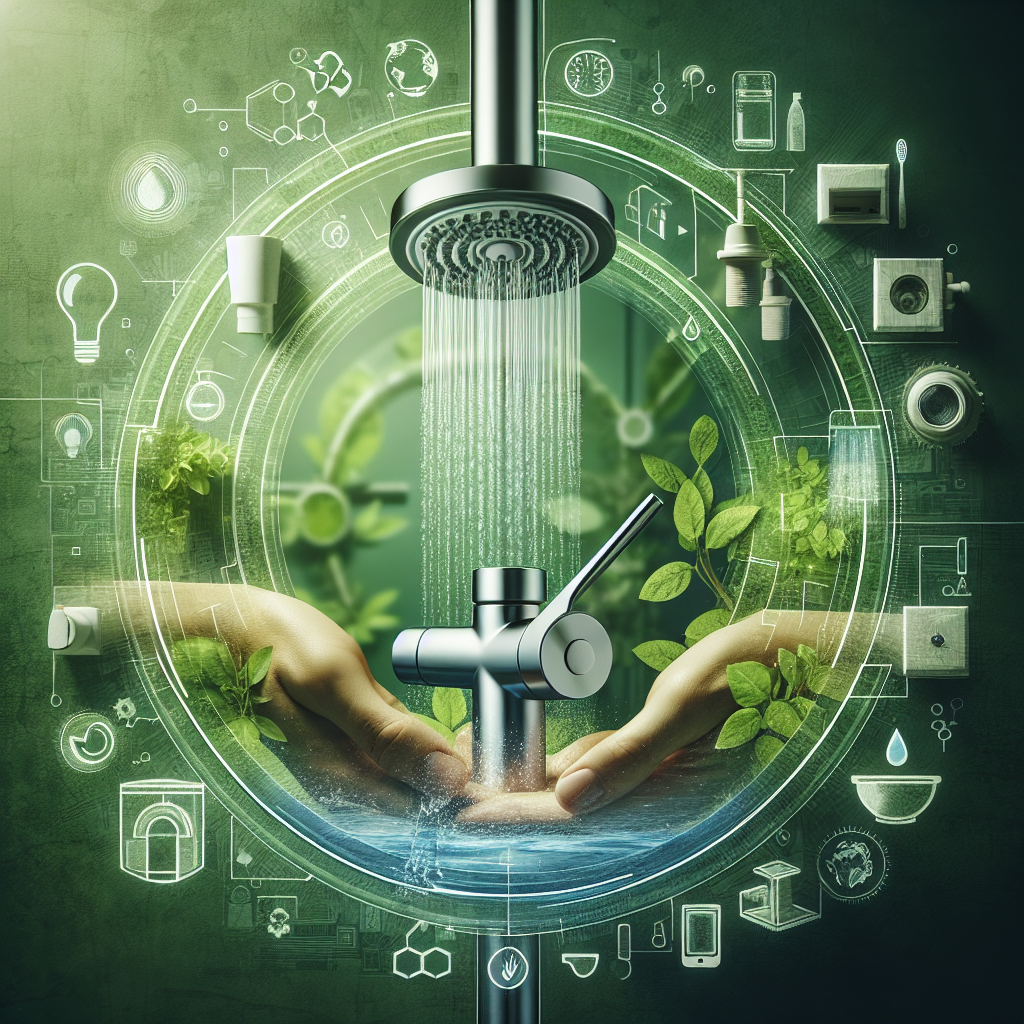Are you passionate about both saving the planet and creating a comfortable home? Look no further! In this article, we will explore a range of eco-friendly plumbing solutions that can be implemented in your sustainable home. From water-saving fixtures to rainwater harvesting systems, these innovative plumbing solutions can help you reduce your water consumption, conserve energy, and contribute to a greener future. So, join us as we dive into the world of eco-friendly plumbing and discover how you can make a positive impact on the environment while enjoying the comforts of your home.

1. Water Conservation
Water conservation is an essential aspect of creating a sustainable home. By implementing eco-friendly plumbing solutions, you can significantly reduce water consumption and minimize your impact on the environment. Here are some effective ways to conserve water in your home:
1.1 Low-Flow Fixtures
Low-flow fixtures, such as faucets and showerheads, are designed to minimize water usage without compromising performance. These fixtures are equipped with water-saving aerators or flow restrictors that limit the amount of water flowing through them. By replacing your old fixtures with low-flow alternatives, you can save a significant amount of water without sacrificing comfort or functionality.
1.2 Dual-Flush Toilets
Dual-flush toilets are another fantastic water-saving option for your home. These toilets provide two flushing options – a full flush for solid waste and a half flush for liquid waste. By choosing the appropriate flush option, you can effectively reduce water consumption and conserve valuable resources.
1.3 Rainwater Harvesting Systems
Rainwater harvesting systems allow you to collect and store rainwater for various uses, such as irrigation, toilet flushing, and laundry. By installing a rainwater harvesting system, you can reduce your reliance on freshwater sources and contribute to water conservation efforts.
1.4 Greywater Recycling
Greywater recycling involves collecting and treating water from sources like sinks, showers, and washing machines for reuse in non-potable applications. By diverting greywater from entering the sewer system and repurposing it for tasks like landscape irrigation, you can conserve water and reduce the strain on freshwater sources.
1.5 Leak Detection and Repair
Leaky pipes and faucets can waste a significant amount of water over time. Regularly checking for leaks and fixing them promptly is crucial for water conservation. Utilizing leak detection devices, such as smart water meters or leak sensors, can help identify hidden leaks and prevent unnecessary water loss.
2. Energy Efficiency
In addition to conserving water, it is equally important to prioritize energy efficiency in your plumbing systems. By integrating energy-saving technologies into your home, you can reduce energy consumption, lower utility bills, and contribute to a greener future. Here are some eco-friendly plumbing solutions for enhancing energy efficiency:
2.1 Insulated Pipes
Insulating your plumbing pipes can help minimize heat loss during the transportation of hot water. This ensures that hot water reaches its destination efficiently without unnecessary energy waste. By insulating both hot and cold water pipes, you can also prevent pipes from freezing during colder months.
2.2 Heat Pump Water Heaters
Heat pump water heaters are highly energy-efficient alternatives to traditional water heaters. These systems use electricity to transfer heat from the surrounding air or ground to heat the water. By utilizing renewable energy sources, heat pump water heaters can significantly reduce energy consumption and lower greenhouse gas emissions.
2.3 Solar Water Heating
Harnessing the power of sunlight, solar water heating systems provide an environmentally friendly way to heat water for residential use. These systems consist of solar collectors that absorb energy from the sun and transfer it to water storage tanks. By utilizing the abundant and renewable energy from the sun, solar water heating systems can greatly reduce reliance on conventional energy sources.
2.4 Energy-Efficient Appliances
By choosing energy-efficient appliances, such as dishwashers and washing machines, you can save both water and energy. Look for appliances with the ENERGY STAR label, as they meet strict energy efficiency standards set by the U.S. Environmental Protection Agency. These appliances can significantly reduce water and energy consumption while delivering exceptional performance.
2.5 Smart Water Management Systems
Smart water management systems utilize advanced technology to monitor, control, and optimize water usage in your home. These systems integrate sensors, data analytics, and automation to identify inefficiencies, detect leaks, and adjust water flow. By providing real-time insights and control over your water consumption, smart water management systems promote efficient water usage and reduce waste.
3. Non-Toxic Plumbing Materials
Using non-toxic plumbing materials is crucial for maintaining a healthy and sustainable home. Conventional plumbing materials, such as lead pipes or chlorine-treated pipes, can introduce harmful substances into your water supply. Here are some eco-friendly plumbing materials to consider:
3.1 Copper and PEX Piping
Copper and PEX (cross-linked polyethylene) piping are popular alternatives to traditional metal or PVC pipes. Copper pipes are durable, corrosion-resistant, and have antimicrobial properties, while PEX pipes are flexible, easy to install, and resistant to freezing. Both copper and PEX piping are considered safe and eco-friendly options for plumbing systems.
3.2 Chlorine-Free Pipes
Chlorinated polyvinyl chloride (CPVC) pipes are frequently used in plumbing systems but may release harmful chemicals into the water supply. Choosing chlorine-free alternatives, such as high-density polyethylene (HDPE) pipes or copper pipes, can help ensure that your water remains free from harmful contaminants.
3.3 Lead-Free Plumbing Fixtures
Lead is a toxic metal that can leach into the water supply from old plumbing fixtures. To protect your health and the environment, it is crucial to opt for lead-free plumbing fixtures, such as faucets, showerheads, and valves. Look for fixtures that are certified as lead-free by reputable organizations.
3.4 Eco-Friendly Sealants
Sealants and adhesives used in plumbing installations can also contain harmful chemicals. Choosing eco-friendly sealants, such as low volatile organic compound (VOC) or solvent-free options, ensures that your plumbing system remains free from hazardous substances.
4. Sustainable Drainage Systems
Sustainable drainage systems play a vital role in managing stormwater runoff and preventing environmental pollution. These eco-friendly solutions help minimize flooding, improve water quality, and enhance the overall sustainability of your property. Consider implementing the following sustainable drainage techniques:
4.1 Permeable Paving
Permeable paving allows rainwater to infiltrate the ground instead of running off into storm drains. This type of paving consists of porous materials that enable water to pass through, reducing the risk of flooding and replenishing groundwater supplies.
4.2 Rain Gardens
Rain gardens are strategically designed shallow depressions that collect and filter rainwater from rooftops or other impervious surfaces. These gardens are planted with native vegetation, which helps absorb excess water, prevent erosion, and remove pollutants. Implementing a rain garden can enhance the beauty of your landscape while contributing to sustainable water management.
4.3 Green Roofs
Green roofs are vegetated rooftop systems that provide numerous environmental benefits, including stormwater management. The plants and soil on green roofs absorb rainwater, reducing the amount of runoff and minimizing the strain on stormwater infrastructure. Additionally, green roofs offer insulation, reduce energy consumption, and create habitat for wildlife.
4.4 French Drains
French drains are subsurface drainage systems that direct excess water away from your property. These drains consist of perforated pipes surrounded by gravel or rock, allowing water to enter and flow away from the area. French drains are effective in managing groundwater and preventing water accumulation around foundations or basements.
4.5 Swales and Detention Ponds
Swales are shallow, vegetated channels designed to slow down and filter runoff water. They help to remove sediments, pollutants, and excess nutrients before the water reaches larger bodies of water. Detention ponds, on the other hand, are constructed to store and temporarily hold stormwater, gradually releasing it into the environment. Both swales and detention ponds are essential components of sustainable drainage systems.

5. Water Filtration and Purification
Ensuring the quality and safety of your water supply is essential for a sustainable home. Filtration and purification systems help remove impurities, contaminants, and potential health hazards, providing you with clean, healthy water. Consider the following options:
5.1 Point-of-Use Filters
Point-of-use filters are individual filtration systems installed at specific water outlets, such as faucets or showerheads. These filters effectively remove common contaminants, including chlorine, sediment, and heavy metals, providing clean and purified water for your daily needs.
5.2 Whole-House Filtration Systems
Whole-house filtration systems treat water at the point of entry into your home, ensuring clean and filtered water throughout your plumbing system. These systems target various contaminants, such as chlorine, sediments, bacteria, and volatile organic compounds (VOCs). Installing a whole-house filtration system provides peace of mind and safeguards the health of your entire household.
5.3 UV Disinfection Systems
UV disinfection systems utilize ultraviolet light to kill or inactivate harmful microorganisms present in water. These systems are highly effective in destroying bacteria, viruses, and other pathogens without the need for harsh chemicals. UV disinfection ensures that your water is safe and free from waterborne diseases.
5.4 Reverse Osmosis Systems
Reverse osmosis (RO) systems are advanced water purification systems that utilize a semi-permeable membrane to remove a wide range of contaminants. These systems effectively remove impurities, including dissolved solids, heavy metals, pesticides, and harmful chemicals. Reverse osmosis systems deliver pure, great-tasting water for drinking, cooking, and other household needs.
5.5 Carbon Filtration Systems
Carbon filtration systems are highly efficient in removing chlorine, volatile organic compounds (VOCs), and unpleasant odors from water. These systems utilize activated carbon filters that adsorb and trap contaminants, leaving you with clean and refreshing water. Carbon filtration systems are affordable, easy to install, and provide a reliable way to improve water quality.
6. Efficient Water Heating
Water heating is a significant energy-intensive process in residential buildings. By adopting efficient water heating solutions, you can reduce energy consumption and lower your carbon footprint. Consider the following eco-friendly options:
6.1 Tankless Water Heaters
Tankless water heaters, also known as on-demand water heaters, provide hot water only when needed, eliminating the standby energy losses associated with traditional storage tank water heaters. These heaters heat water directly as it flows through the unit, resulting in energy savings and reduced water waste.
6.2 Recirculating Systems
Recirculating systems minimize water waste by quickly delivering hot water to faucets without the need to run the water and wait for it to heat up. These systems circulate hot water through a dedicated return line, ensuring that hot water is readily available at any faucet in your home. By eliminating the need to waste water while waiting for it to heat up, recirculating systems save both water and energy.
6.3 Heat Recovery Systems
Heat recovery systems capture waste heat from various sources, such as showers and hot water drains, and repurpose it to preheat incoming cold water. By utilizing the heat that would otherwise be lost, these systems reduce the energy required to heat water, improving overall energy efficiency.
6.4 Insulated Hot Water Storage Tanks
Insulating your hot water storage tank helps to minimize heat loss and reduce standby energy consumption. By wrapping the tank with an insulating jacket or using an insulated tank, you can ensure that hot water stays hot for longer periods, reducing the need for frequent reheating.
6.5 Time-of-Use Water Heaters
Time-of-use water heaters are designed to heat water during off-peak demand periods when electricity rates are typically lower. By taking advantage of lower energy costs during specific time windows, these water heaters enable you to save money and reduce stress on the electrical grid.
7. Smart Irrigation Systems
Efficient irrigation practices are essential for maintaining healthy landscapes while minimizing water waste. By incorporating smart irrigation systems into your outdoor areas, you can ensure optimal water use and promote sustainability. Consider the following features:
7.1 Weather-Based Controllers
Weather-based controllers automatically adjust watering schedules based on current weather conditions, including temperature, rainfall, and evaporation rates. These controllers use sensors or connect to local weather data to optimize irrigation, preventing overwatering and conserving water.
7.2 Rain Sensors
Rain sensors detect rainfall and temporarily pause irrigation systems, preventing unnecessary watering during wet weather. By preventing overwatering, rain sensors help save water and minimize the risk of landscape damage caused by excessive moisture.
7.3 Soil Moisture Sensors
Soil moisture sensors measure the moisture content in the soil, providing data on when irrigation is necessary. By avoiding unnecessary watering when the soil is already adequately moist, soil moisture sensors allow for more precise and efficient irrigation practices.
7.4 Drip Irrigation
Drip irrigation systems deliver water slowly and directly to the root zones of plants, minimizing water waste from evaporation and runoff. These systems use low-pressure emitters or micro-sprinklers to provide precise and targeted irrigation, reducing water consumption while promoting healthy plant growth.
7.5 High-Efficiency Sprinklers
High-efficiency sprinklers, such as rotary nozzles or pressure-regulated sprinklers, deliver water more effectively and evenly compared to traditional spray nozzles. These sprinklers efficiently distribute water, ensuring that it reaches the intended areas without wasteful overspray or runoff.
8. Water and Energy Monitoring
Monitoring water and energy usage is essential for understanding consumption patterns and identifying opportunities for improvement. By utilizing smart monitoring systems, you can gain valuable insights and make informed decisions regarding water and energy conservation. Consider the following monitoring options:
8.1 Smart Water Meters
Smart water meters provide real-time visibility into water consumption, allowing you to monitor usage patterns and detect leaks promptly. These meters connect to a digital platform or smartphone app, enabling you to track your water consumption and make adjustments to conserve water effectively.
8.2 Energy Monitoring Systems
Energy monitoring systems measure and track the energy consumption of various appliances and systems in your home. By identifying energy-intensive areas and understanding usage patterns, you can implement energy-saving measures and make informed decisions to reduce energy waste.
8.3 Leak Detection Devices
Leak detection devices, such as smart sensors or flow meters, can help identify leaks in your plumbing system. These devices immediately notify you of any irregularities in water flow, allowing you to address the issue promptly and prevent water waste.
8.4 Water Usage Tracking Apps
Water usage tracking apps provide a user-friendly interface for monitoring and managing water consumption. These apps enable you to track your daily usage, set conservation goals, receive personalized recommendations, and measure your progress towards sustainable water practices.
8.5 Remote Monitoring Systems
Remote monitoring systems allow you to access real-time data on water and energy consumption from anywhere, using your smartphone or computer. These systems provide convenience and flexibility for monitoring and managing your plumbing systems, ensuring efficient usage and timely maintenance.
9. Water-Saving Plumbing Practices
In addition to implementing eco-friendly plumbing solutions, adopting water-saving practices in your everyday life is crucial for sustainable water usage. These habits can further minimize water waste and contribute to a greener lifestyle. Consider the following practices:
9.1 Shorter Shower Times
Reducing your shower time by even a few minutes can save a significant amount of water. Aim for shorter showers and consider using a water-saving showerhead to further minimize water usage without compromising your shower experience.
9.2 Reduced Faucet Flow Rates
Lowering the flow rate of your faucets by installing aerators or flow restrictors can help conserve water while performing daily tasks like handwashing or teeth brushing. These simple additions reduce water waste by maintaining adequate flow while reducing overall consumption.
9.3 Only Running Full Loads
Make a habit of only running your dishwasher or washing machine when you have a full load. Running these appliances with a full load maximizes water and energy efficiency, saving both resources and money.
9.4 Fixing Leaks Promptly
Leaky faucets, toilets, or pipes can waste a significant amount of water. Promptly fixing leaks or replacing faulty components is essential to prevent water waste and maintain a sustainable plumbing system.
9.5 Reusing Greywater
Greywater, the wastewater generated from sources such as sinks, showers, and washing machines, can be repurposed for non-potable uses like landscape irrigation. Implementing a greywater recycling system enables you to utilize this water resourcefully, reducing the demand for fresh water.
10. Eco-Friendly Septic Systems
If your home relies on a septic system for wastewater management, choosing an eco-friendly option is crucial for minimizing environmental impact. Eco-friendly septic systems utilize advanced technologies to efficiently treat and manage wastewater while protecting groundwater and ecosystems. Consider the following options:
10.1 Composting Toilets
Composting toilets are waterless systems that convert human waste into compost through natural decomposition processes. These systems eliminate the need for water flushing, conserve water resources, and produce nutrient-rich compost that can be used as fertilizer.
10.2 Constructed Wetlands
Constructed wetlands mimic natural wetland ecosystems to treat wastewater efficiently. These systems use plants, soil, and microbial processes to filter and remove pollutants from the water. Constructed wetlands provide effective wastewater treatment while creating habitats for wildlife and enhancing biodiversity.
10.3 Aerobic Treatment Units
Aerobic treatment units (ATUs) are advanced septic systems that utilize oxygen and beneficial bacteria to break down and treat wastewater. These systems provide enhanced treatment capabilities compared to traditional septic tanks, resulting in cleaner effluent and reduced environmental impact.
10.4 Biofilter Systems
Biofilter systems utilize a combination of physical filtration and biological processes to treat wastewater effectively. These systems contain filter media, such as sand, gravel, or organic materials, which facilitate the removal of contaminants before the water is discharged. Biofilter systems are efficient, cost-effective, and environmentally friendly septic options.
10.5 Recirculating Sand Filters
Recirculating sand filters (RSFs) are septic systems that employ layers of sand and gravel to filter and treat wastewater. These systems operate by recirculating the treated effluent, ensuring additional treatment and reducing potential environmental impacts. RSFs provide reliable wastewater treatment while minimizing water consumption and maintaining a sustainable wastewater management system.
In conclusion, adopting eco-friendly plumbing solutions in your home is a crucial step towards creating a sustainable living environment. Whether through water conservation, energy efficiency, non-toxic materials, sustainable drainage systems, water filtration, efficient water heating, smart irrigation, water and energy monitoring, water-saving practices, or eco-friendly septic systems, there are numerous options to reduce your environmental footprint. By implementing these eco-friendly plumbing practices, you not only contribute to a greener future but also enjoy the benefits of reduced water and energy bills, improved water quality, and overall environmental sustainability.

